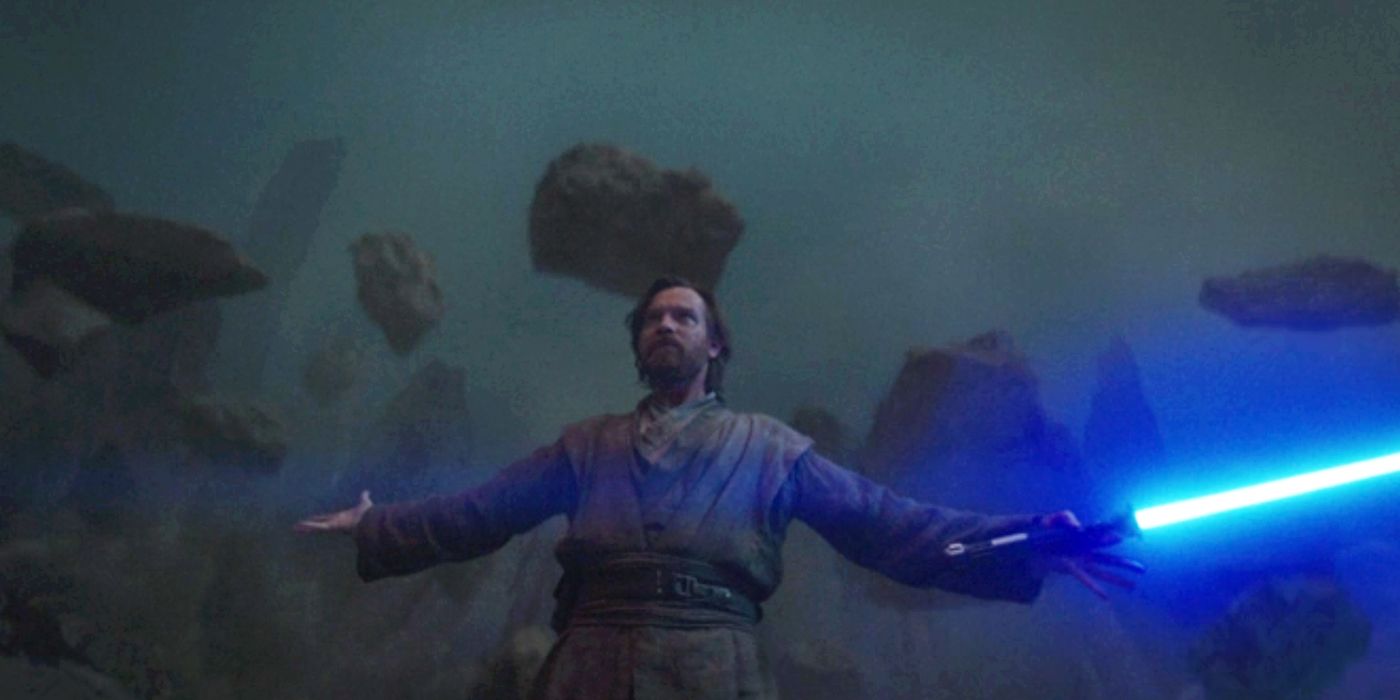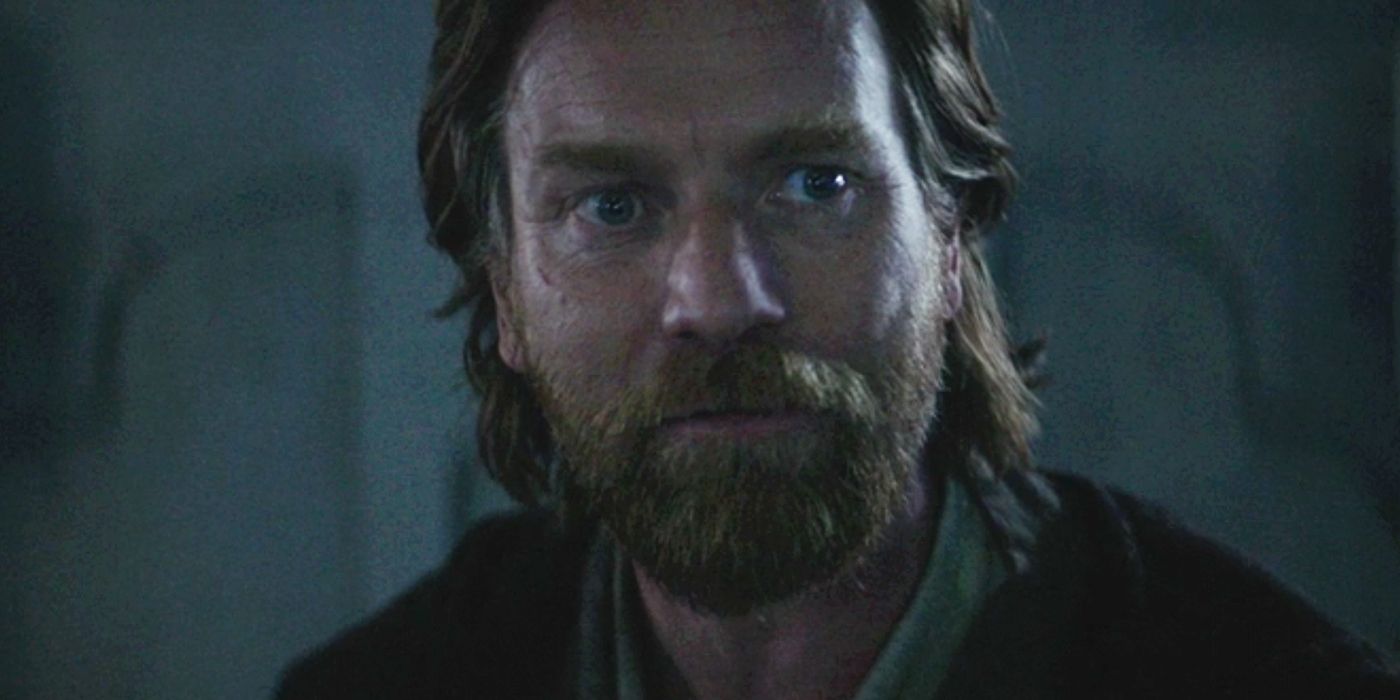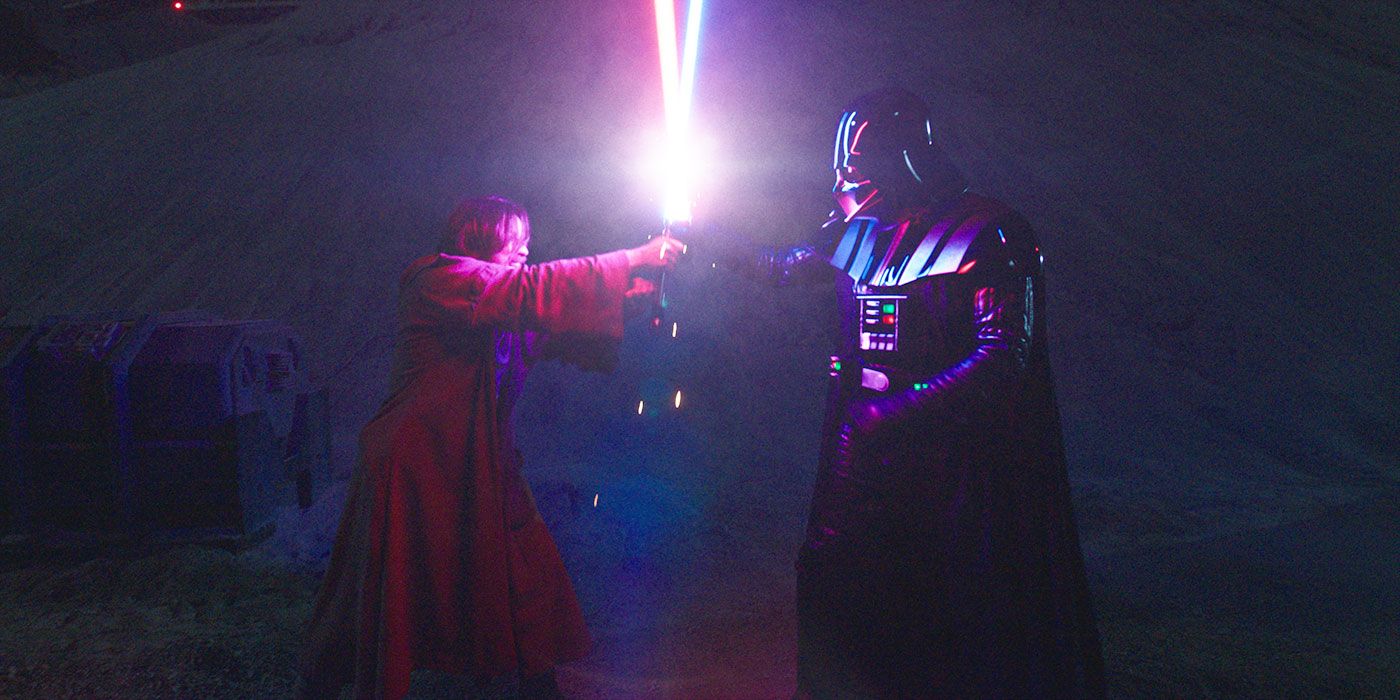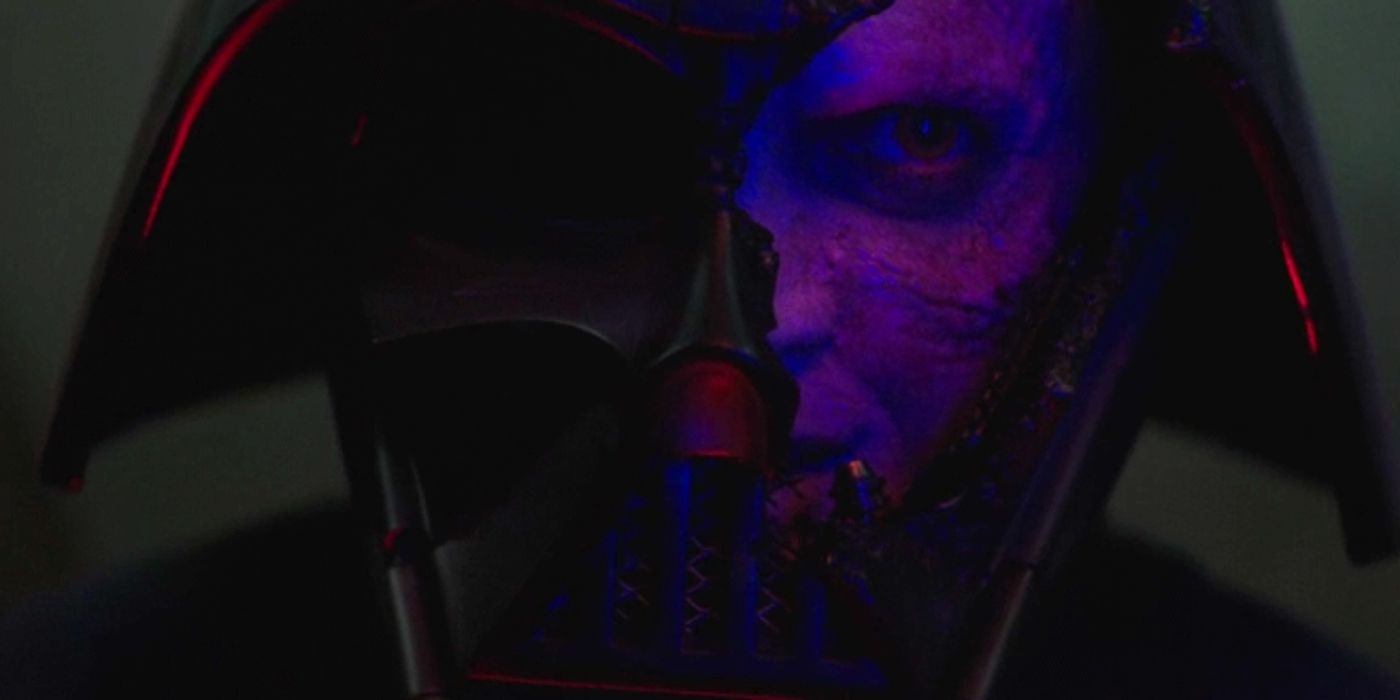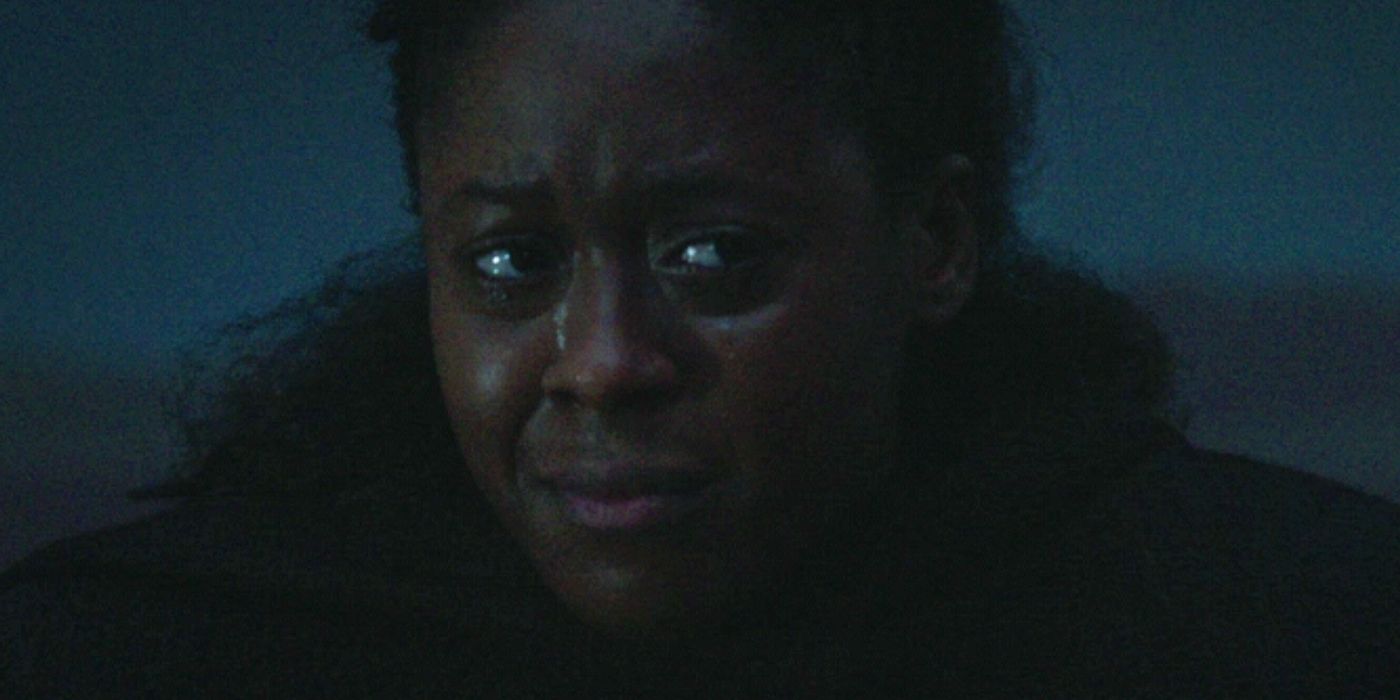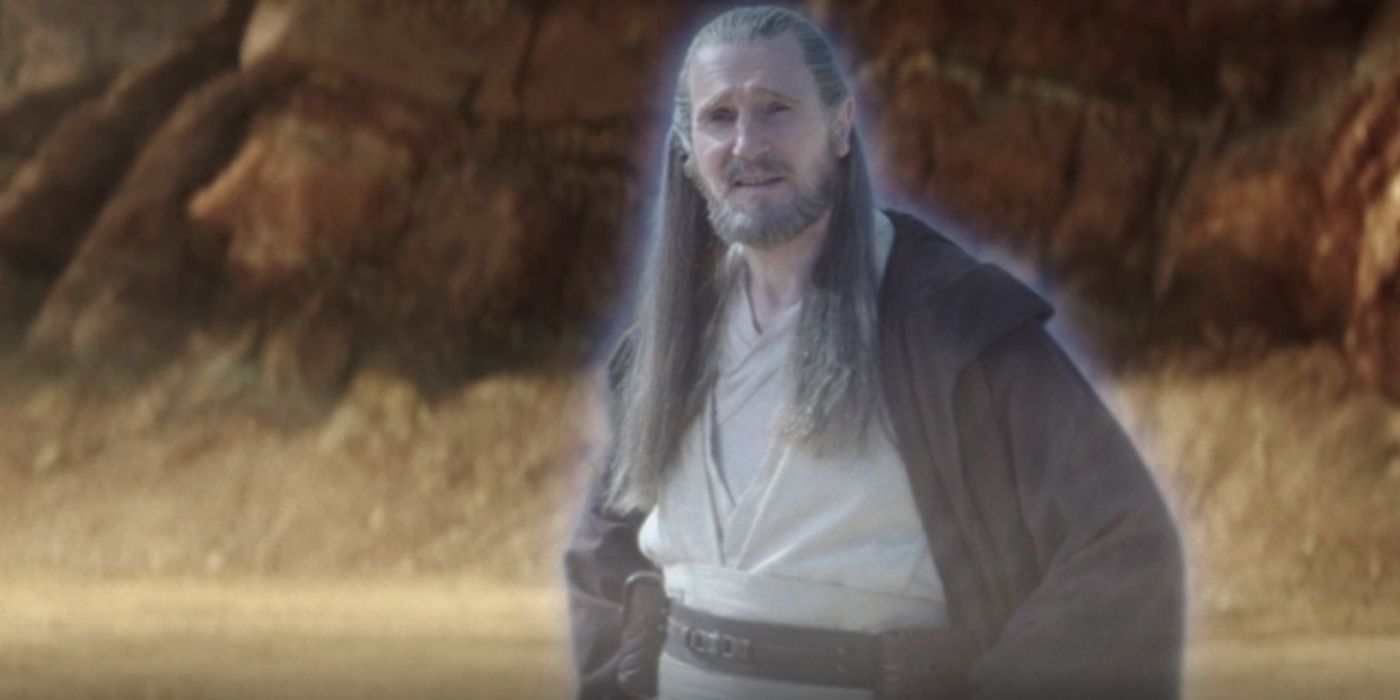Editor's Note: The following contains spoilers for Episode 6 of the Disney+ series, Obi-Wan Kenobi.
Obi-Wan Kenobi’s highly anticipated finale sees some of the most dramatic and heartbreaking moments of the series so far, including a final confrontation with Darth Vader (Hayden Christensen, James Earl Jones). It’s also filled to the outer rim with Easter eggs, each with varying levels of subtlety. With its exciting action sequences and moving emotional beats, the episode easily stands on its own merit, and the numerous references don’t come off as a crutch. Instead, they make an already satisfying series finale even more fun to watch.
One of the Easter eggs is in the soundtrack during the chase scene at the beginning of the episode. As Vader’s ship pursues the Path rebels’ transport vessel, the score is a re-purposed version of John Williams’ chase scene score at the end of The Empire Strikes Back. The transport is making its way to a planet called Tessen: tessen, meanwhile, is the name for a Japanese fan used by samurai that could be weaponized and used in warfare. This may seem like more of a fun fact than an Easter egg, but Star Wars in general is intrinsically tied to Japanese culture. A New Hope was itself an adaptation of an already existing Japanese film: The Hidden Fortress, directed by Akira Kurosawa, with the character of Obi-Wan Kenobi (Ewan McGregor) being based on the film's protagonist Makabe Rokurota (Toshiro Mifune). George Lucas based the Jedi heavily on samurai tradition and even tried to persuade Mifune to play Kenobi; however, Mifune refused, and Alec Guinness took on the role instead.
On the transport, Obi-Wan gives Leia (Vivien Lyra Blair) Tala’s holster before he leaves to fight Vader. This specific holster doesn’t seem to appear in the original trilogy; however, it is a nice piece of foreshadowing. In the first episode of Obi-Wan Kenobi, Leia tells Bail Organa (Jimmy Smits) that she doesn’t want to be a politician. He tells her there are many ways to lead. She repeats this phrase when he sees her with her holster at the end of the episode. And it turns out to be true; in the original trilogy, Leia’s career as a senator is very short-lived. However, she becomes a soldier and an essential part of the rebellion, showing that there are indeed ways to change the world other than being a politician.
Obi-Wan’s decision to face Vader is in itself a reference to the original trilogy. Many fans have pointed out how each episode of Obi-Wan Kenobi mirrors the corresponding episode in the Star Wars film saga. Part VI of Kenobi follows this pattern with its similarities to Return of the Jedi, beginning with Obi-Wan’s decision to leave Leia and face Vader alone, just as Luke (Mark Hamill) tells Leia (Carrie Fisher) that he must leave her to confront Vader alone. Later, in preparation for Reva’s (Moses Ingram) arrival to their farm, Owen (Joel Edgerton) tells Luke that the Tuskens are on the hunt again, and to run if anything goes wrong. Luke responds “I’m not afraid” — the same line that he delivers to Yoda in The Empire Strikes Back. The room they’re standing in is also where Anakin tells Padme (Natalie Portman) that he killed all the Tusken raiders who kidnapped his mother (“and not just the men…but the women and the children too").
The fight between Obi-Wan and Vader is, unsurprisingly, the most Easter-egg rife sequence in the entire episode. Obi-Wan tells Vader “I will do what I must” — the exact words he used on Mustafar in Revenge of the Sith right before his epic battle with Anakin. He then assumes that iconic Obi-Wan pose which, while technically called Form III, or Soresu, will always be associated with Kenobi's fighting style specifically, especially in the battle between him and General Grievous on Utapau in Revenge of the Sith. “Then you will die,” Vader replies. This too is a reference: In Star Wars: Rebels, Vader says this during his showdown with Ahsoka Tano (Ashley Eckstein) after she tells him she won’t leave him. Vader and Obi-Wan then duel, the choreography creating a tragic parallel to the duel in the flashback of them training as Master and Padawan on Coruscant.
When Darth Vader decimates the ground under Obi-Wan and then buries him, he distinctly has the high ground now; it’s unclear whether this is intentional, but if it is, that level of pettiness is certainly in character for Anakin. As Obi-Wan struggles to hold off the rocks with the Force, flashbacks of dialogue replay in his thoughts: first, “admit you were beaten” from the flashback in the previous episode; then “I see through the lies of the Jedi” and “you’re my enemy” from the Mustafar sequence in Revenge of the Sith. “You should have killed me when you had the chance,” “I am what you made me” and “you cannot run, Obi-wan” are from Part III of Obi-Wan Kenobi. “I do not fear the dark side,” meanwhile, is also from Revenge of the Sith, though the full quote is “I do not fear the dark side as you do.” Of course, Obi-Wan is soon rejuvenated by the thought of the twins whom he must protect. He throws off the rocks and confronts Vader again with renewed vigor.
Obi-Wan splits Darth Vader’s helmet, revealing one side of his disfigured face. This too mirrors Vader’s and Ahsoka’s fight in Rebels: Ahsoka cracks open Vader’s helmet in almost exactly the exact same way Obi-Wan does, and in both series, the same amount and part of Anakin’s face is visible (although this time it’s the other side of the mask that’s destroyed). In Return of the Jedi, when Luke takes off his father’s helmet, there is a scar on the side of his head in the same place that Obi-Wan strikes him during the duel. Seeing even part of Anakin’s face, Obi-Wan apologizes tearfully. “I am not your failure, Obi-Wan,” Darth Vader replies. This reply, paired with Obi-Wan’s apology, hearkens back to Obi-Wan’s line in the prequel trilogy in which he tells Anakin “I have failed you.” But Darth Vader's words are far from reassuring. “You didn’t kill Anakin Skywalker,” he says. “I did.” And now we have from Vader’s own mouth the story Obi-Wan tells Luke in A New Hope about his father’s fate: that Darth Vader betrayed and killed his father. Obi-Wan says to Vader, “Then my friend is truly dead,” mirroring a scene in Return of the Jedi: when Vader commands that Luke be brought before the Emperor, Luke looks at Vader and says to him, “Then my father is truly dead.” Obi-Wan’s farewell — “Goodbye, Darth” — reflects his resignation that Anakin is now irretrievably lost to the dark side. Kenobi also calls Darth Vader “Darth” in A New Hope before their final duel aboard the Death Star. Alone on the planet, Vader screams out Obi-Wan’s name in anguished fury. He is not the first man to do this, nor will he be the last: Darth Maul’s (Sam Witwer) agonized “KEENNOBIIIII!!!!” as he hunts for Obi-Wan in Rebels springs to mind in particular.
Meanwhile, Reva spares Luke’s life. In choosing compassion, she chooses that which makes the key difference between the light and dark sides of the Force. She tosses her lightsaber in the sand, giving it up just as all the Jedi on the Path gave up their lightsabers and replace Obi-Wan's and Anakin’s lightsabers, which Obi-Wan dug out of the sand in the first episode.
In Vader’s castle on Mustafar, Ian McDiarmid returns as a hologram of The Emperor. In response to Vader’s plan to destroy everything in his path until he finds Kenobi, Palpatine says, “I wonder if your thoughts are clear on this.” This line parallels a similar one from Return of the Jedi — referring to Luke instead of Kenobi, the Emperor says “I wonder if your feelings on this matter are clear, Lord Vader.” After this conversation in Obi-Wan Kenobi, the Imperial March plays. However, when Obi-Wan tells Leia about her real parents, Anakin and Padme’s love theme from Attack of the Clones, “Across the Stars,” can be heard. The scene on Alderaan then notably sets up A New Hope when Obi-Wan tells Bail Organa, “If you ever need my help again, you know where to find me.” Leia asks Obi-Wan if she’ll ever see him again. The same question Anakin asks his mother Shmi (Pernilla August) in The Phantom Menace.
Obi-Wan finally moves out of his cave, which hopefully means he’ll be moving into that house we see him inhabiting in A New Hope. He visits Owen to tell him he was right about Luke. Obi-Wan is wearing new clothes at the end of the episode: specifically, white robes with a brown vest. Down to the goggles, this is the same outfit he wears in the 2015 comic Star Wars #15. The comic follows him as he lives in exile, protecting Luke and the Lars family from the shadows. The fact that he’s now wearing white after only wearing earth tones during the entire series also feels representative of his newfound clarity: clarity that allows him to finally see Qui-Gon Jinn’s Force ghost, which he wasn’t ready to see before. The toy that he brings Luke, a model T-16 skyhopper, is the same one that Luke plays with in front of R2D2 and C3PO in A New Hope. And then we have the moment that made me and thousands of other viewers scream in unison: the “Hello there” as Obi-Wan introduces himself to Luke Sywalker.
Finally, at long last, Obi-Wan is able to see his master Qui-Gon Jinn (Liam Neeson). Qui-Gon is actually the first Jedi to find the secret to life after death. In Star Wars: The Clone Wars, he teaches Yoda how to become a Force ghost as well, through a series of tests. Yoda tells Obi-Wan that there is training he must undergo in his solitude. He tells him he must learn to commune with Qui-Gon. Presumably, now that Obi-Wan finally has the faith and clarity that has allowed him to see Qui-Gon, that training can commence. It is likely that, sometime from now until the beginning of A New Hope, Obi-Wan too will be taught to retain his consciousness after death in order to become a mentor who can guide Luke even from beyond the grave.

